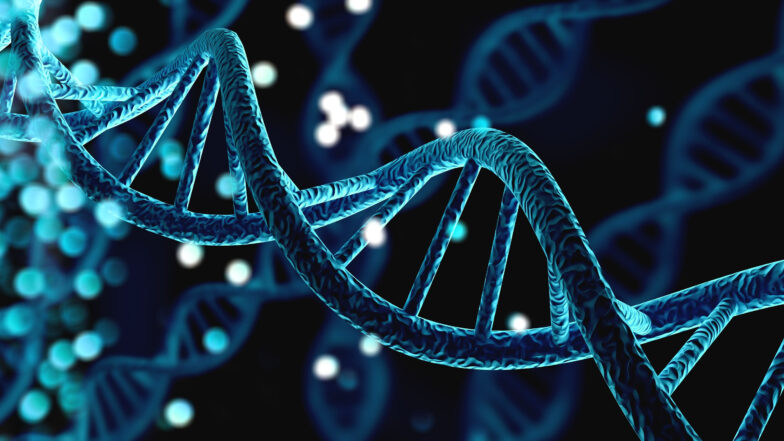Do ENCODE Skeptics Protest Too Much? Part 1 (of 3)
When the ENCODE Project reported that at least 80 percent of the human genome consists of functional sequences, they forced a radical revision of scientists’ understanding of human genetics. But recent scientific papers have called this conclusion into question. In this three-part series, I collate and describe the criticisms published by ENCODE “skeptics” and then offer my response, demonstrating that their disapproval of the ENCODE Project has more to do with philosophy than science.
Queen Gertrude
Hamlet, Act III, scene ii
I love Shakespeare, particularly the tragedies. Many of these stories center on a specific character flaw and explore how that particular frailty leads to the downfall of the otherwise noble protagonist. For example, Othello’s jealousy leads to the death of his love, Desdemona—ironically by his own hand.
Recently, several scientific papers highlight “flaws” in the results from phase two of the ENCODE Project’s efforts to identify and catalog all the functional elements in the human genome.1 Many evolutionary biologists hope these critiques will undermine the project’s discovery that 80 percent of the human genome, at minimum, containsfunctional DNA elements. But a careful analysis of these complaints indicates that ENCODE skeptics protest a bit too much.
Reviewing the ENCODE Project
The ENCODE Project Consortium announced their phase two results in September 2012.2 In the short video below (and in other RTB resources), I discuss why this announcement may be one of the most important scientific achievements in my lifetime, at least as a professional biochemist.
The ENCODE Project reports that a staggering 80 percent of the human genome consists of functional elements. With the study’s third phase underway, that number may well increase. Yet shortly after the draft sequence of the human genome was first published in 2000, researchers thought only around 2 percent consisted of functional sequences, with the rest being junk.
Numerous skeptics and evolutionary biologists claim the vast amount of junk DNA in the human genome as the most compelling evidence for evolution and the most potent challenge against intelligent design/creationism. But these arguments evaporate in the wake of the ENCODE Project, radically altering our view of the human genome. No longer can it be considered a wasteland of junk; rather the human genome must be acknowledged as an elegant system that displays in its architecture and operation sophistication far beyond what most evolutionary biologists ever imagined.
Are the ENCODE Conclusions Valid?
When announced, the ENCODE report generated quite a bit of Internet chatter. Many skeptics asserted that the media overhyped the results while creationists and ID adherents misconstrued them.
Specifically, the ENCODE skeptics claimed that:
- The results of the project have been sensationalized and poorly reported by science journalists;
- The discussion of the ENCODE results ignores the fact that nearly 50 percent of the human genome consists of transposable elements and 2 percent is comprised of pseudogenes, both of which are nonfunctional, junk sequences; and
- The ENCODE scientists detected biochemical activity for 80 percent of the human genome—but it is incorrect to equate biochemical activity with function.
At that time, I wrote an article responding to these challenges, in which I maintain that these complaints hold very little weight. Since that time, however, a number of evolutionary biologists have presented more formal protests against the ENCODE Project’s conclusion about junk DNA. Listed below are what I think to be the most significant criticisms:
- The ENCODE Project employed a faulty definition of function.
- The ENCODE Project made a logical error when assigning function to the different elements of the genome.
- The ENCODE Project assigned function to entire classes of sequence elements based on identified function for a few members of that class.
- The ENCODE Project conflated biochemical activity with function.
- The results of the ENCODE Project are absurd in light of the evolutionary paradigm.
- The ENCODE Project results don’t square with the C-value paradox.
Response to ENCODE Objections
Given the extensive criticisms leveled against the ENCODE Project, it would seem difficult to maintain that 80 percent (possibly more) of the human genome consists of functional elements. Yet, careful consideration of these objections indicates that they may not be as challenging as they might appear to be at first glance. In part two of this series, I will discuss the objections that the ENCODE Project employed a faulty definition of function and that the results are absurd in light of the evolutionary paradigm..
Endnotes
- Sean R. Eddy, “The C-Value Paradox, Junk DNA, and ENCODE,” Current Biology 22 (November 6, 2012): R898–R899; Dan Graur et al., “On the Immortality of Television Sets: ‘Function’ in the Human Genome According to the Evolution-Free Gospel of ENCODE,” Genome Biology and Evolution 5, no. 3 (2013): 578–90; Deng-Ke Niu and Li Jiang, “Can ENCODE Tell Us How Much Junk DNA We Carry in Our Genome?” Biochemical and Biophysical Research Communications430 (January 25, 2013): 1340–43; W. Ford Doolittle, “Is Junk DNA Bunk? A Critique of ENCODE,” Proceedings of the National Academy of Sciences, USA 110 (April 2, 2013): 5294–300.
- The ENCODE Project Consortium, “An Integrated Encyclopedia of DNA Elements in the Human Genome,” Nature 489 (September 6, 2012): 57–74.





